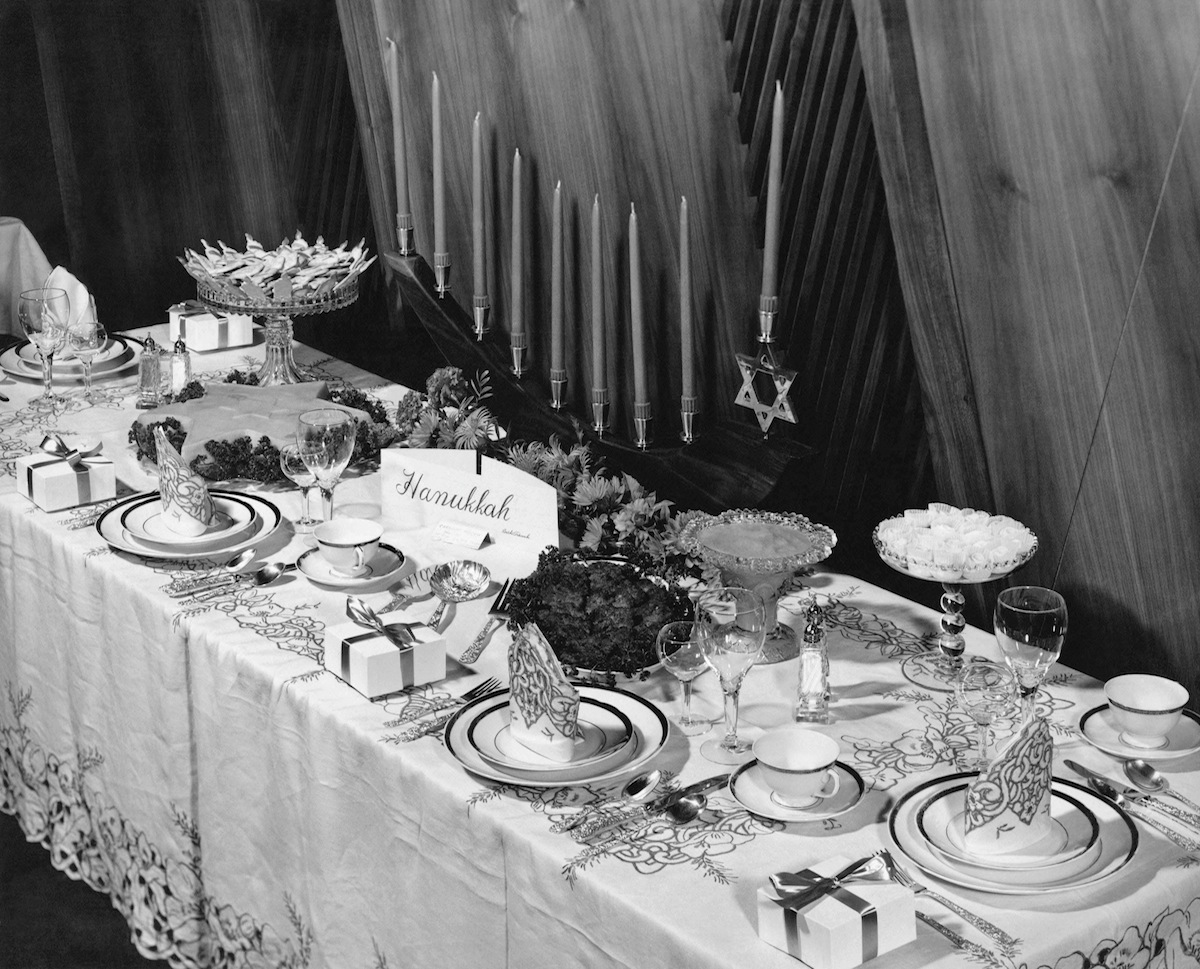

This post is in partnership with the History News Network, the website that puts the news into historical perspective. The article below was originally published at HNN.
Though Hanukkah now is a Jewish counterpart to the Christian holiday of Christmas, it commemorates Judaism’s bare survival of an attempt to obliterate it by a Hellenistic king, Antiochus the fourth. It is a holiday marking Judaism’s near miraculous survival of trauma, a trauma that left a permanent mark on both the Jewish and Christian Bibles.
The time was the late 170’s BCE (BCE is a secular equivalent to BC), and the land of Israel was ruled by a Hellenistic king, Antiochus the Fourth. Antiochus ruled the Seleucid Empire of lands on the Eastern Mediterranean. The Romans to the West were on the rise, and Antiochus’ kingdom was financially broke from paying high tribute to the Romans after a military loss to them. Though the Seleucid kings had permitted the Jews to practice their ancestral customs, Antiochus’ need for money made him offer the high priesthood of the Jerusalem temple to the highest bidder.
In 172 BCE Antiochus sold the high priesthood to an unsavory character, Menelaus, an advocate for Hellenistic reforms who was not a member of the priestly family. Menelaus soon outraged the local populace by plundering the temple treasury for money to pay the high tribute that he had promised Antiochus. When the populace revolted against Menelaus, Antiochus restored him to power and issued a decree forbidding observance of Jewish laws in Jerusalem and surrounding towns. According to the books of Maccabees, Jews were forced to offer a sacrifice to foreign gods, Torah scrolls were burned, mothers who had allowed their babies to be circumcised were killed with their children. Anyone with a copy of a Torah scroll was executed, and leading citizens were required, on pain of death, to eat pork in public, thus openly disobeying the Torah’s commands. Judaism was faced with a life and death struggle for its continued existence.
The people of Israel had faced crises before, but never such a direct challenge to their religious practices. The Mesopotamia-based Assyrian empire had destroyed towns and dominated Jerusalem for decades. The Babylonian empire destroyed Jerusalem and took many of its leading citizenry into extended exile in Babylon. But no one before Antiochus IV tried so hard to eradicate Jewish Torah observance and monotheism.
Faced with the choice of “eat pig or die,” Jews responded in different ways. Some went ahead and ate some pork or offered the required sacrifices to foreign gods. Others are said to have fled to the barren wilderness to avoid the persecution. Still others openly defied the law and were killed outright. For example, the book of 2 Maccabees (chapters 6-7) tells of the killing of an elderly scribe, Eleazar and also of seven brothers with their mother.
Still others chose to fight. Around 168 BCE, a provincial priestly family, the Hasmoneans (also known as “the Maccabees”), began a guerrilla operation against the armies of Antiochus. They scored repeated successes against a Seleucid army weakened by problems in other parts of the empire. Within a few years, in 164 BCE, the Hasmoneans had fought the Seleucids to a draw. Antiochus IV issued a decree rescinding his prohibition of Judaism:
King Antiochus to the senate of the Jews and to the other Jews, greeting. If you are well, it is as we desire. We also are in good health. Menelaus has informed us that you wish to return home and look after your own affairs. Therefore those who go home by the thirtieth day of Xanthicus will have our pledge of friendship and full permission for the Jews to enjoy their own food and laws, just as formerly, and none of them shall be molested in any way for what he may have done in ignorance. [2 Macc 11:27-31]
Later that year, in December of 164, the leader of the Hasmoneans at the time, Judah Maccabee, retook Jerusalem, trapped the Seleucid forces in the fortress there, and purified the temple of the non-Yahwistic cult. The holiday of Hanukkah celebrates this event, and the Hasmonean royal-priestly family was known by Judah’s nickname, “the hammer” (Maccabee) up to the present day.
Hanukkah celebrates the first decisive victory in the story of Jewish resistance to Greek persecution, but the struggle would leave lasting marks on Judaism and on the Hebrew Scriptures that Jews and Christians share. Eventually the Hasmoneans ended the rule of the Greek Seleucids over Palestine and established their own monarchy based in Judaism.
The Jews triumphed, but the trauma of near-annihilation at the hands of the Greeks left its mark. The Hanukkah resistance struggle gave birth to the Jewish idea of martyrdom that was then expanded in Christianity and became a major theme in Islam as well. This was the time that a fundamental division between “Jew” and “Greek” developed that had not existed before, a perceived hostility between Greek ways of thought and Hebrew traditions.
This may also have been the time when the idea of clearly-defined Hebrew “scripture” developed. The Greeks already had a defined set of educational writings that marked an educated “Greek,” focused on Homer’s epics above all and additional authors from the classical period of Greek literature, e.g. Herodotus, Plato and Euripides. The post-Hanukkah Hasmonean kingdom is the time when we first see signs of the development of a Hebrew counterpart to this Greek curriculum. This Hebrew Bible was focused on Torah first and foremost (rather than Homer) and a set of prophetically-inspired books from the time before Greek rule and the “end of prophecy” (1 Maccabees 9:27). This Hebrew Bible, the basis for the Christian “Old Testament,” was an anti-Greek Bible formed in the wake of hellenistic trauma.
Not every Jewish group immediately adopted such a standardized, defined set of holy scriptures. Throughout centuries, Israelites had worked with a looser idea of holy scripture, and this idea of a more fluid set of writings continued in later Jewish groups, such as the Qumran/Dead Sea community around the time of the Hasmoneans and the early Christians a bit later. The apocalyptic book of Enoch, for example, is still cited as scripture in the Christian scriptural writing of Jude (Jude 14). But as Roman trauma followed Greek trauma, this clearly defined Hebrew Bible of 24 books became the established Bible of rabbinic Judaism, and a model for the Christian New Testament of the early church. Before the trauma of the near-death of Judaism at the hands of Antiochus the fourth there was no such thing. Hanukkah marked the beginning of the biblical age.
David Carr, Professor of Old Testament/Hebrew Bible at Union Theological Seminary in New York, is the author of Holy Resilience: The Bible’s Traumatic Origins, which was just published by Yale University Press.
More Must-Reads from TIME
- Cybersecurity Experts Are Sounding the Alarm on DOGE
- Meet the 2025 Women of the Year
- The Harsh Truth About Disability Inclusion
- Why Do More Young Adults Have Cancer?
- Colman Domingo Leads With Radical Love
- How to Get Better at Doing Things Alone
- Michelle Zauner Stares Down the Darkness
Contact us at letters@time.com